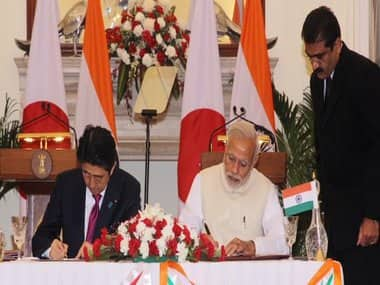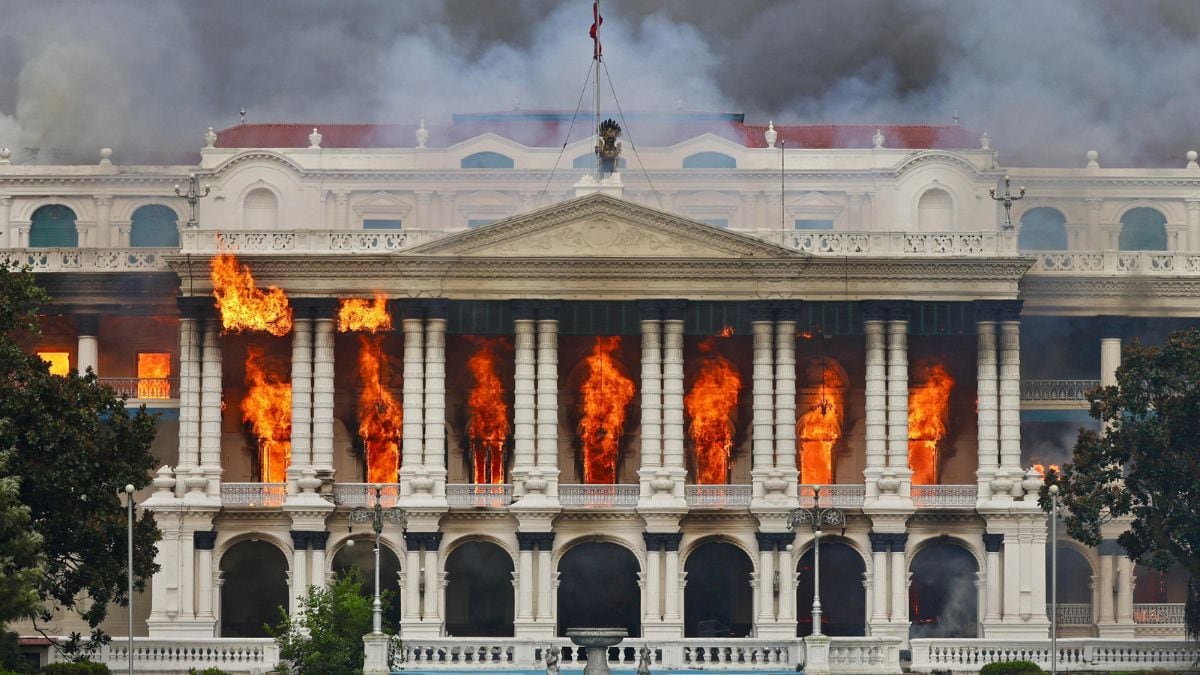By Seema Guha Shinzo Abe’s three-day visit to India will further reinforce the growing warmth in Indo-Japan ties as the two Asian democracies clinch a path-breaking defence deal, a major railway investment plan and reach an agreement on civil nuclear co-operation which will be sealed and signed after the technical details are cleared. Simply put, there are a few more steps to go, because of Japan’s tough domestic law on nuclear issues. The civil nuclear agreement will have to get the approval of the Japanese Parliament, which may not be such a huge problem considering that Shinzo Abe has a majority in the Diet. Substantive Visit Abe’s visit has been a substantive one, as Prime Minister Narendra Modi himself said after talks with his Japanese counterpart. “Excellency, in a world of intense, international engagements, few visits are truly historic or change the course of a relationship. Your visit, Mr. Prime Minister, is one,’’ Modi said at Hyderabad House on Saturday. China’s close following [caption id=“attachment_2543472” align=“alignleft” width=“380”]  PM Modi and PM Abe. Twitter @MEAIndia[/caption] The visit by Abe (who has taken a much more aggressive stand towards China, than his predecessors) is being closely watched by Beijing. China is worried that Shinzo Abe may use India to counter its rise in Asia and draw Delhi into a loose defence arrangement in the Asia-Pacific region. In his first term as prime minister, Abe had worked towards a loose arc of democracy in the Asia-Pacific region, stretching from the US and Australia as well as Japan and India. China’s vehement protests as well as the fact that Abe’s first term was short lived killed that initiative. However, China fears that Japan’s nationalist leader may work again on similar lines. They will certainly not appreciate the India-Japan defence co-operation agreement and the attempt to get India involved in the defence architecture of the larger Asia-Pacific region. Indo-Pacific The joint statement released after the high level talks mentions India and Japan’s ‘global and strategic partnership working together for peace and prosperity of the Indo-Pacific region and the world.’ The term Indo-Pacific, coined by former foreign secretary Shyam Saran, refers to extension of India’s maritime interests to the Pacific and not just confined to the Indian Ocean. Though there is nothing against China in the joint statement, certain phrases won’t please Beijing. There is mention of ‘unwavering commitment to realise a peaceful, open, equitable, stable and rule-based order in the Indo-Pacific region and beyond,’ as well as the need to ‘uphold the principles of sovereignty and territorial integrity; peaceful settlement of disputes; democracy, human rights and the rule of law;’ and pointedly ‘freedom of navigation and overflight.’ Much of this will be seen by China as aimed at its increasingly aggressive maritime posture. However it is wrong to see the India-Japan ties merely from the Chinese prism. “The frequent meetings between our leaders, and the fact that Prime Minister Shinzo Abe and Prime Minister Narendra Modi share a personal rapport have given momentum to the ties,’’ says former foreign secretary Shyam Saran. “China is a factor, its growing clout is a challenge to both India and Japan, but there is much more to our relations. As India looks eastwards and Japan westwards, our strategic interests in the region coincide. With Abe’s activist defence posture, India and Japan can work together with other partners like the US for regional security,’’ the former foreign secretary adds. Defence Framework India and Japan also signed a path-breaking defence agreement. The framework will enhance defence and security cooperation by making available defence equipment and technology necessary to implement joint research and joint production. The two countries are in talks for the joint production of US-2 amphibious planes. India is scheduled to buy two US-2 sea planes which Japan manufactures. The deal worth $1.1 billion will also lead to joint production of ten more planes between Japan’s ShinMaywa and a private Indian partner. This will go a long way to boost Prime Minister Modi’s desire to strengthen India’s infant defence production industry. Talks between India and Japan on procuring the amphibious planes had been on for the last two years. When the sale happens, it will be the first time in 50-years that Japan will sell military equipment. Prime Minister Abe is now moving away from Japan’s pacifist foreign policy, imposed after World War II and trying to function as a normal power. Joint defence production is high priority in Prime Minister Narendra Modi’ s desire to strengthen India’s fledgling defence production base and will promote his make in India vision. Japan will now permanently join India and US for the Malabar exercises. In 2007, Japan joined India and US for the Malabar naval manouevres, but the UPA government stopped inviting Japan to smooth China’s ruffled feathers. This year the Malabar exercises held off the Bay of Bengal coast also had representation from Japan. It was also announced that military to military and air force to air force engagments between India and Japan will also now be a regular feature. This will give depth to the military relations. Railway Infrastructure Japan is also making a huge investment of over $14.7 billion, on railway infrastructure. A high speed bullet train between Delhi and Ahmedabad , which had been in the works since Modi’s visit to Japan last year, was clinched on Saturday. The Cabinet had cleared the project earlier in the week. China too is conducting feasibility studies for high speed trains on other parts of railway network. Sixteen agreements were signed during Saturday’s talks. Prime Minister Modi also announced visa on arrival to all Japanese citizens starting from March next year. He said the visa on arrival “is in recognition of our special relationship.’’
Shinzo Abe’s three-day visit to India will further reinforce the growing warmth in Indo-Japan ties as the two Asian democracies clinch a path-breaking defence deal, a major railway investment plan and reach an agreement on civil nuclear co-operation
Advertisement
End of Article
Written by FP Archives
see more


)

)
)
)
)
)
)
)
)



